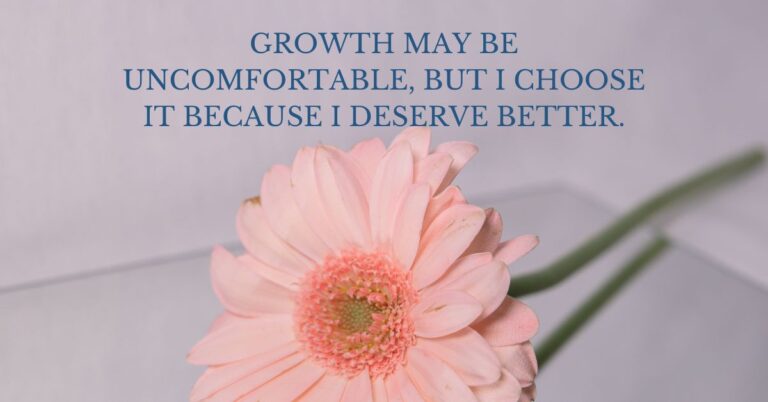
At some point in our existence, a curious thought comes to mind and we start wondering, asking ourselves, ‘Is this all there is?’ It might strike during a sleepless, monotonous night with no sleep or perhaps after yet another day packed with stress. However, one thing remains constant: a growth mindset thrives on the necessity of change. There exists a fine balance where life feels ‘not too bad’ yet is limited to merely ‘going through the motions. Somehow, deep within, we desire ‘more’ such as purpose, growth, and connection.
This urge to change often arises at a boiling point. The depressingly boring routines which we once thrived upon, now appear suffocating. Now, the only thing we crave for is something that would help us rise to our deeper aspirations. However, the thought of surrendering into the unknown can be frightening: Where do we even start from? Inevitably, the urge to be productive resurfaces.
Well, the power of a strong growth mindset helps us answer all of them. Forget about immense or instant change, those are always daunting. Instead, alteration starts on a micro scale. Prioritize making intentional promises to yourself, there is a whole new scope for improvement.
This essay will discuss 10 life-changing exercises that can help you overcome stagnation and self-limiting beliefs on your way to becoming an improved version of yourself. The ability to grow and improve is within you, and this is a healthy place to start.
I’m putting forth my best effort at self improvement. Instead of taking on countless activities at once, I’m going to set realistic goals: Starting tomorrow, I will wake up a bit earlier than usual and spend 10 minutes journaling or meditating. There is no pressure to attend to the world’s demands too quickly. Some persistent thoughts may require professional guidance, so perhaps an appointment is in order.
It’s both frightening and exhilarating—I won’t lie. If I put in one effort each day, in a consistent manner, perhaps the feeling of hope can eventually replace the existing sense of hopelessness. That’s why I am taking the first step, no matter how small, reminding myself daily to trust in my ability to follow through.
What is a Growth Mindset?
Growth mindset is a popular concept attributed to psychologist Carol Dweck and refers to the understanding that one’s ability, intelligence, and talent can be developed with continuous learning and effort. In contrast to such a view is a fixed mindset which posits that one’s inherent traits are unalterable.
Adopting a growth mindset means viewing challenges and failures as opportunities rather than setbacks. According to research, people who exhibit a growth mindset tend to push through difficulties and ultimately achieve their goals while living a fulfilling life.
Let’s discuss the 10 exercises that can help you with this mindset shift.
1. Reframe Negative Self-Talk:
A voice which tells us that we, “You’re not good enough” or “You’ll never succeed” is often the biggest hurdle we come across in our pursuit of growth. Such beliefs hold you back from reaching your full potential.
Practice: Take a piece of paper and write down three negative thoughts about yourself. Now, reframe each situation in a positive way.
Negative: “I’m terrible at public speaking.”
Reframed: “I’m learning to become a confident public speaker.”
This effort can change the way how you speak to yourself internally and open up avenues to self improvement.
2. Embrace Challenges:
No one likes the idea of challenges, but the truth is challenges are very helpful for you to grow. Instead of hindering yourself from these new challenges, having a growth mindset permits you to embrace them. Instead of avoiding difficulties, a growth mindset helps you embrace them as opportunities.
Practice: Identify a small challenge which feels uncomfortable but do-able. It may be something like voicing your opinion in a meeting, taking up a new hobby or starting an awkward conversation. Decide on doing it and keep in mind that advancement comes from stretching your comfort limits.
3. Utilize Failure as a Learning Opportunity
The errors that one encounters in life are often seen in a negative light; however, they can serve as an invaluable source of wisdom. When one learns to view failures as a form of feedback, they enable their capacity to nurture personal growth.
Practice: Analyze how a recent endeavor was unsuccessful or did not meet your expectations. Consider three helpful insights from the experience and develop an approach for future application. Suppose, after an unsuccessful business endeavor, you learn to better manage your time and communications.
4. The “Not Yet” Approach
As humans, while trying to accomplish something, there are instances where we feel overwhelmed and are never able to reach there. If the words “not yet” are used, then there is a positive shift in scope.
Practice: Any time you feel like you are about to give up on a goal, tell yourself not to quit because “you are just not there yet.” This small CBT shift fosters the idea that everyone can achieve their set objectives if they persist.
5. Learning Objectives Setting
While some people may set goals such as “I want a promotion” or “I want to lose 10 pounds,” which are strictly performance-based, there are some who set learning-based goals and focus on the underlying processes.
Practice: Readjust a performance goal to a learning goal. Rather than “getting a promotion,” set a goal to “read at least one book on leadership and get feedback from my manager.”
6. Cultivate a Growth Mindset Circle
The people you surround yourself with shape your mindset and habits. Being around people such as friends or work colleagues who encourage growth will also make you feel inspired to want to make personal growth strides.
Practice: Identify two people who inspire you in your circles. Get in touch and discuss, collaborate, or mentor them. If you do not have these connections yet, consider joining a community or group that suits your growth target.
7. Picture Yourself Growing
With visualization, you are capable of changing your physical attributes to enhance your life and how you perceive it. When you daydream about yourself being a successful person, you prepare your brain to accept possibilities once you set goals.
Practice: Dedicate 5 minutes a day to visualize yourself accomplishing something. For example, picture yourself always giving presentations or effortlessly learning new skills.
8. Show appreciation for their endeavors
Those who have a growth mindset are gratified by efforts alone. Expressing thankfulness for the work you put in enhances your chances of being motivated and helps you overcome adversity.
Practice: Make a note of three things that made you uncomfortable or that you worked towards achieving some growth at the end of the day. For instance, “I actively participated in a meeting,” and “I dedicated half an hour to acquire new knowledge.”
9. Get Feedback
Adventurous activities are risky but without taking risk we would not grow. Constructive feedbacks are important as they help us grow in areas where we lack.
Practice: Outline an area that you feel comfortable improving and asking for feedback from someone whom you can trust. This feedback must be valued and taken sincerely.
10. Set New Goals
Self-growing is a never-ending adventure. It is crucial to cherish the achievements we have made. Celebrating small victories enforces the mindset that is geared towards growth.
Practice: At the end of each month, construct a list of milestones that has been reached. For instance, “I was able to stick to my meditation practice for two weeks”, “I was able to finish a complex project at work”.
Developing a growth mindset is not something that happens in a day; it is a never-ending process of awakening, shapeshifting, and changing. These exercises can assist in changing your point of view or helping you see the world more differently.
In hindsight, I appreciate the commitment I made to growth, something that is sometimes hard to put into words. Deciding to implement changes in my life was a crucial moment for me. I started exercising on a routine basis as a way to familiarize myself with my body, meditating to quiet my thoughts while actively working on my emotional fears, and learning how to fortify the boundaries I established. These changes may have required a lot of effort on my part, but the results are worth cherishing.
The world is full of opportunities, and there is no reason to dwell on chances missed. So with that, I encourage you to use today as a starting point. Do not overthink it, pick any one action and implement it. Your future self will be grateful.







One Comment